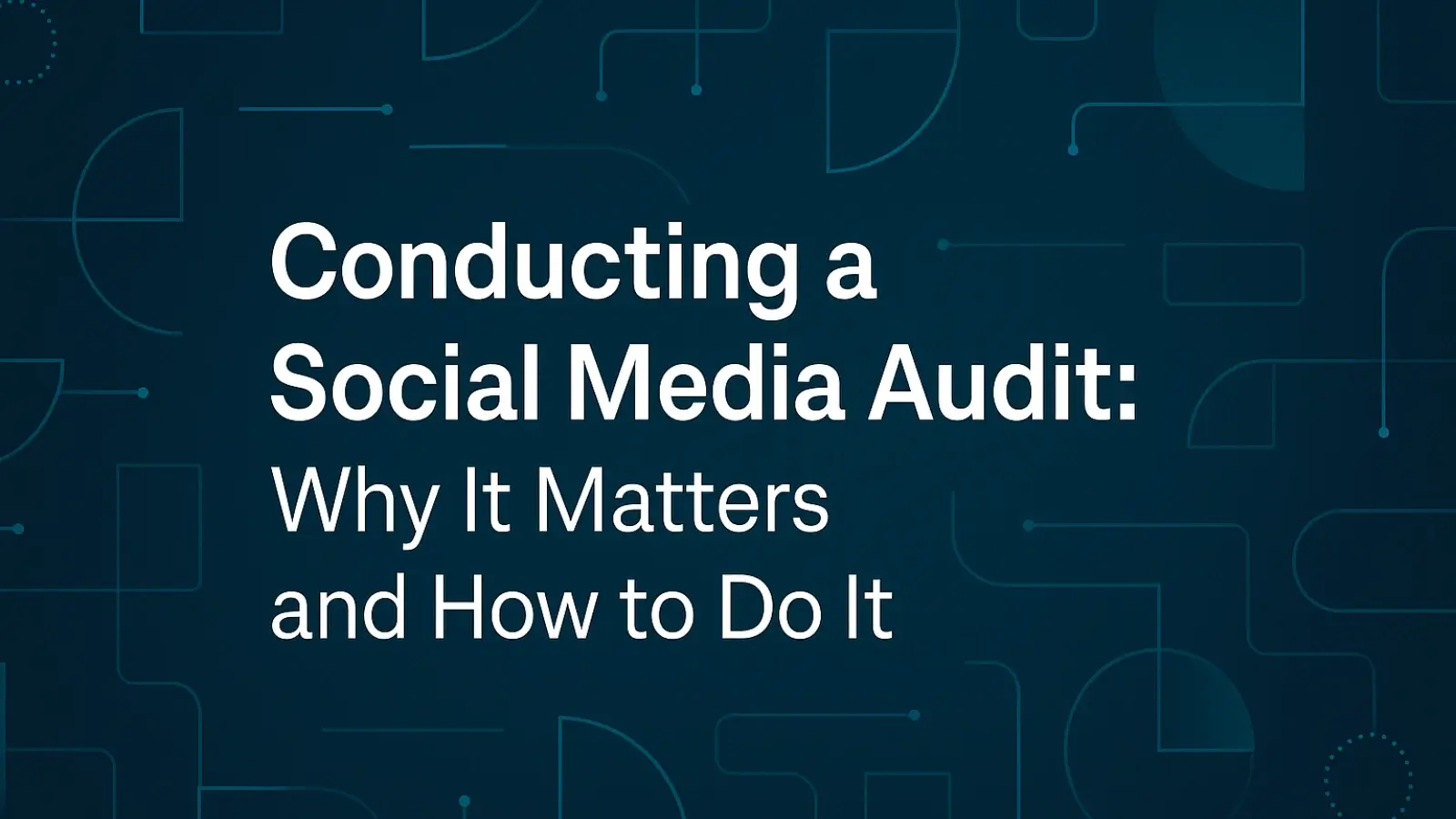


Most brands today are active on at least three or four social platforms. But just being present doesn’t mean their strategy is working. Likes and followers don’t always translate to leads or sales and many businesses have no idea what’s actually driving results.
That’s where a social media audit comes in. It’s not just about reviewing numbers; it’s about getting clarity. An audit shows which platforms deserve more attention, where messaging is off, and what content resonates best.
In Blacksire Digital Marketing, audits are treated as a regular health check. It’s a simple process, but one that can transform random posting into a focused, effective strategy.
Without regular reviews, businesses often keep posting without knowing what’s moving the needle. A social media audit takes the guesswork out. It helps spot what’s performing well whether it's a certain type of reel, a recurring hashtag, or a specific platform. At the same time, it reveals what's wasting time and resources.
For example, if Twitter engagement is flatlined for months but Instagram is driving traffic to the site, that insight is crucial. Businesses can then double down on what’s working and cut back on what’s not.
Many teams spread themselves thin trying to be everywhere at once which results in inconsistent posting, burnout, and lackluster returns. Auditing reveals where to scale back and where to invest.
Instead of posting daily on five platforms, it might make more sense to post three times a week on two that actually generate leads. That’s how brands using Blacksire Digital Marketing strategies stay lean and focused by letting the data lead.
When profile bios differ across platforms, or branding feels disconnected, it sends mixed signals to the audience. A good audit checks for consistency in tone, logos, descriptions, and even link tracking.
Consistency builds trust and trust drives action. Whether someone finds the brand on TikTok or LinkedIn, the message and image should align perfectly.
Too many decisions in social media are based on gut feeling. A proper audit flips that. It provides real numbers on what’s getting reach, clicks, shares, and conversions.
By analyzing platform-specific insights, businesses can shift from reactive posting to proactive planning. This is the foundation that Blacksire Digital Marketing uses when creating data-backed campaigns that drive actual results.
Start by identifying every platform the business is on, active or inactive. This includes the popular ones like Facebook, Instagram, and LinkedIn, but also forgotten pages on platforms like Pinterest, Threads, or even old YouTube channels.
It’s common to find multiple accounts for the same brand, especially if the team has changed over the years. Document them all in a spreadsheet so you have a clear, centralized view of your digital presence.
Once all accounts are listed, the next step is to check the details. Are the bios aligned? Is the logo up to date? Do all links go to the correct landing pages?
This stage is about brand hygiene. A professional and unified look across platforms makes a difference. Teams following Blacksire Digital Marketing best practices prioritize visual and messaging consistency even in small things like tone or emoji usage.
Now it’s time to dig into the numbers. Use each platform’s analytics to track:
Follower growth
Engagement rate (likes, comments, shares)
Click-through rate (CTR)
Reach and impressions
Conversion rate (where applicable)
Don’t just track vanity metrics. Focus on how content is contributing to broader business goals, whether that’s website traffic, lead generation, or direct sales.
Every platform has a handful of posts that stand out. Look at which content types consistently overperform, maybe it’s short-form videos, tutorials, memes, or customer spotlights.
Take note of format, length, tone, time of day posted, and visual style. The goal is to replicate and expand what already works instead of starting from scratch every week.
Check who’s actually following and engaging with the brand. Look at age ranges, gender splits, geographic locations, and behavioral trends.
Are these the people the brand wants to reach? If not, it’s time to realign messaging and content. Demographics are key to refining voice and targeting across campaigns.
A quick competitor scan can offer powerful insights. See which platforms they’re most active on, how frequently they post, and how much engagement they get.
Are they leveraging newer features like Instagram Reels or LinkedIn polls? Do they reply to comments and messages promptly? Observing the competition helps shape strategy without reinventing the wheel.
Consistency is great but only if it fits audience behavior. Review how often the brand is posting and whether it aligns with peak engagement times.
Posting daily might be too much on one platform and not enough on another. Tools like Meta Business Suite or LinkedIn Analytics can help pinpoint ideal days and times to post.
Finally, examine the quality of the captions. Are they clear, engaging, and action-oriented? Are hashtags relevant or just copied and pasted?
Check whether the call-to-action (CTA) is actually prompting people to do something like click, comment, or share. Strong CTAs often make the difference between a scroll and a sale.
Running a social media audit doesn’t have to mean juggling spreadsheets and screenshots manually. There are plenty of tools—both free and premium—that simplify the process.
Free options:
Meta Business Suite: Great for Facebook and Instagram analytics.
LinkedIn Analytics: Built-in metrics for post reach, clicks, and follower demographics.
Twitter/X Analytics: Useful for understanding tweet engagement and trends.
Google Sheets: Perfect for organizing audit results and tracking updates.
Paid tools:
Sprout Social and Hootsuite: Offer deeper insights and cross-platform reporting.
Socialbakers: Ideal for competitor benchmarking and advanced audience analysis.
Later and Buffer: Great for scheduling and performance tracking in one place.
The choice of tools depends on the team’s goals and scale. Small brands can get away with native tools, while growing companies often benefit from integrated dashboards.
What sets top digital marketing teams apart is their ability to automate the repetitive parts of the audit and zero in on insights. At Blacksire Digital Marketing, the process typically combines first-party platform data with third-party analytics to build an actionable audit in hours not days.
By using tools that tie performance metrics directly to business KPIs, teams spend less time interpreting the data and more time acting on it.
Once the audit is complete, don’t try to fix everything at once. Start with the areas that will make the biggest impact. That could be updating outdated bios, removing inactive accounts, or reworking a content calendar for platforms with low engagement.
Quick wins help build momentum. Fixing small things like broken links or missing profile pictures can immediately improve professionalism and user experience.
Now that the team knows what’s working, it’s time to rethink the schedule. Use the audit insights to decide how often to post, what formats to focus on, and what themes to prioritize.
For example, if short videos are outperforming image posts, shift resources toward video creation. If audiences are most active in the evening, schedule posts accordingly.
Blacksire Digital Marketing teams often use audit findings to create agile calendars that evolve month to month, allowing brands to test and optimize in real time.
Clear, realistic goals come from good data. Based on the audit, teams should define specific targets like:
Increase Instagram engagement rate by 15% in 90 days
Grow LinkedIn followers by 1,000 this quarter
Drive 500 monthly visits to the website via social channels
Having tangible goals keeps the social strategy focused and measurable. It also makes it easier to adjust and iterate when things change.
There’s no one-size-fits-all answer, but the general rule is this: audit often enough to stay in control, but not so often that it slows you down.
For most brands, a quarterly audit is ideal. This gives enough time to collect meaningful data, spot trends, and course-correct without falling too far behind. For fast-growing companies or those running high-volume campaigns, monthly mini-audits can help stay on top of rapid changes in performance or audience behavior.
If a brand is launching on a new platform, rebranding, or shifting strategy, that’s also a good moment to run a full audit. The goal is to make sure every piece of content and every platform is aligned with what the business is trying to achieve whether that’s brand awareness, lead generation, or direct sales.
Agencies like Blacksire often build audits directly into their client workflows, treating them as a regular health check rather than a one-off project. This keeps strategies fresh, data relevant, and content performance steadily improving.
A social media audit isn’t just a digital cleanup, it’s a powerful way to realign strategy, maximize ROI, and cut out the noise. By taking a structured look at performance, content, and audience insights, brands gain the clarity they need to grow with purpose. It’s not about being everywhere, it’s about showing up in the right places, with the right message, at the right time.
Whether you’re managing two platforms or juggling six, regular audits help turn scattered efforts into strategic action. Brands that build this habit into their workflow see stronger engagement, clearer direction, and better results across the board.
Ready to elevate your social strategy with a professional audit? Reach out to the experts at Blacksire via inquiries@blacksire.com to get started.